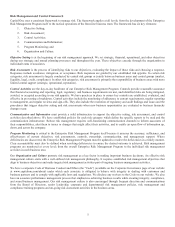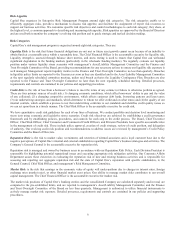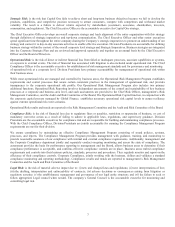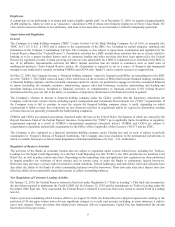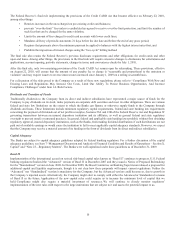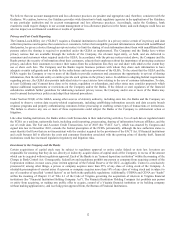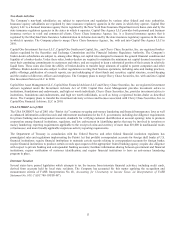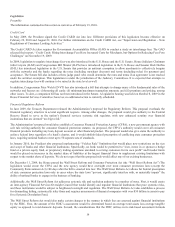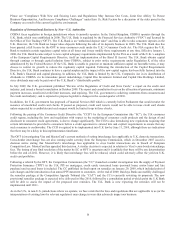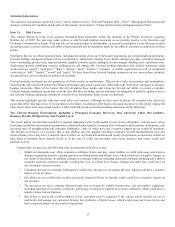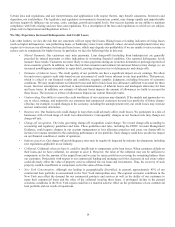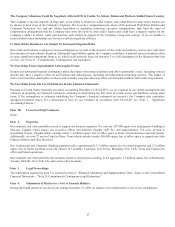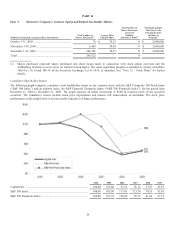Capital One 2009 Annual Report Download - page 27
Download and view the complete annual report
Please find page 27 of the 2009 Capital One annual report below. You can navigate through the pages in the report by either clicking on the pages listed below, or by using the keyword search tool below to find specific information within the annual report. 14
Legislation
Preamble
The information contained in this section is current as of February 19, 2010.
Credit Card
In May 2009, the President signed the Credit CARD Act into law. Different provisions of this legislation become effective on
February 22, 2010 and August 22, 2010. For further information on the Credit CARD Act, see “Supervision and Regulation – New
Regulations of Consumer Lending Activities.”
The Credit CARD Act also requires the Government Accountability Office (GAO) to conduct a study on interchange fees. The GAO
released their report, “Credit Cards: Rising Interchange Fees Have Increased Costs for Merchants, but Options for Reducing Fees Pose
Challenges” on November 19, 2009.
In 2009, legislation to regulate interchange fees was also introduced in the U.S. House and the U.S. Senate. House Judiciary Chairman
John Conyers (D-MI) and Congressman Bill Shuster (R-PA) have introduced legislation in the U.S. House and Senator Dick Durbin
(D-IL) has introduced legislation in the U.S. Senate that provides an antitrust exemption to allow merchants to collectively bargain
with the networks and the banks regarding the rates (including merchant discount) and terms (including rules) for payment card
acceptance. The Senate bill also includes a three judge panel who would determine the rates and terms if an agreement is not reached
under the antitrust exemption. This legislation is under the jurisdiction of the Judiciary Committees. It is expected that attempts to
regulate interchange fees will continue to be raised at the state level as well.
In addition, Congressman Peter Welch (D-VT) has also introduced a bill that attempts to change many of the fundamental rules of the
networks and focuses on: (i) honoring all cards: (ii) minimum/maximum transaction amounts; and (iii) premium card pricing, among
other issues. To date, a companion bill has not been introduced in the Senate. A legislative hearing was held on October 8, 2009 in the
House Financial Services Committee; however, no additional action is currently scheduled.
Financial Regulatory Reform
In June 2009, the Treasury Department released the Administration’s proposal for Regulatory Reform. This proposal overhauls the
financial regulatory structure in several significant respects. Among other changes, the proposal would give authority to the Federal
Reserve Board to serve as the nation’s financial services systemic risk regulator, with new enhanced scrutiny over financial
institutions that are deemed “too big to fail.”
The Administration’s proposal would also establish a Consumer Financial Protection Agency (CFPA), a new government agency with
sole rule writing authority for consumer financial protection statutes. As proposed, the CFPA’s authority would cover all consumer
financial products including any loan, deposit account or other financial product. The proposal would also give states the authority to
enforce federal laws regardless of a bank’s charter, and it would abolish federal preemption of conflicting state consumer protection
laws, requiring national banks to meet up to 50 separate sets of standards.
In January 2010, the President also proposed implementing “Volcker Rule” limitations that would place new restrictions on the size
and scope of banks and other financial institutions. Specifically, no bank would be permitted to “own, invest in or sponsor a hedge
fund or a private equity fund, or proprietary trading operations unrelated to serving customers for its own profit” and broader limits
would be placed on increases in the market share of liabilities at the largest financial firms to supplement existing limitations with
respect to the market share of deposits. We do not expect that this proposed rule would affect any of our existing businesses.
On December 11, 2009, the House passed the Wall Street Reform and Consumer Protection Act (the “Wall Street Reform Act”) The
legislation would create the CFPA and the new agency would have oversight over most consumer protection laws (except the
Community Reinvestment Act) 180 days after the bill is enacted into law. The Wall Street Reform Act allows for federal preemption
of state consumer protection laws only in cases where the state laws “prevent, significantly interfere with, or materially impair” the
ability of national banks to engage in the business of banking.
Additionally, the Wall Street Reform Act addresses systemic risk and resolution authority in a number of ways. First, it would create
an inter-agency Financial Services Oversight Council that would identify and regulate financial institutions that pose systemic risks,
and these institutions would be subject to heightened oversight and regulation. The Wall Street Reform Act also establishes a process
for dismantling failing, systemically risky firms and requires assessments of financial companies with over $50 billion in assets to pay
for a Systemic Dissolution Fund.
The Wall Street Reform Act would also make certain changes to the manner in which fees are assessed against financial institutions
by the FDIC. First, the amount of the FDIC’s assessment would be determined based on average total assets less average tangible
equity as opposed to total domestic deposits. Second, the considerations that the FDIC utilizes in its risk-based assessment formula



